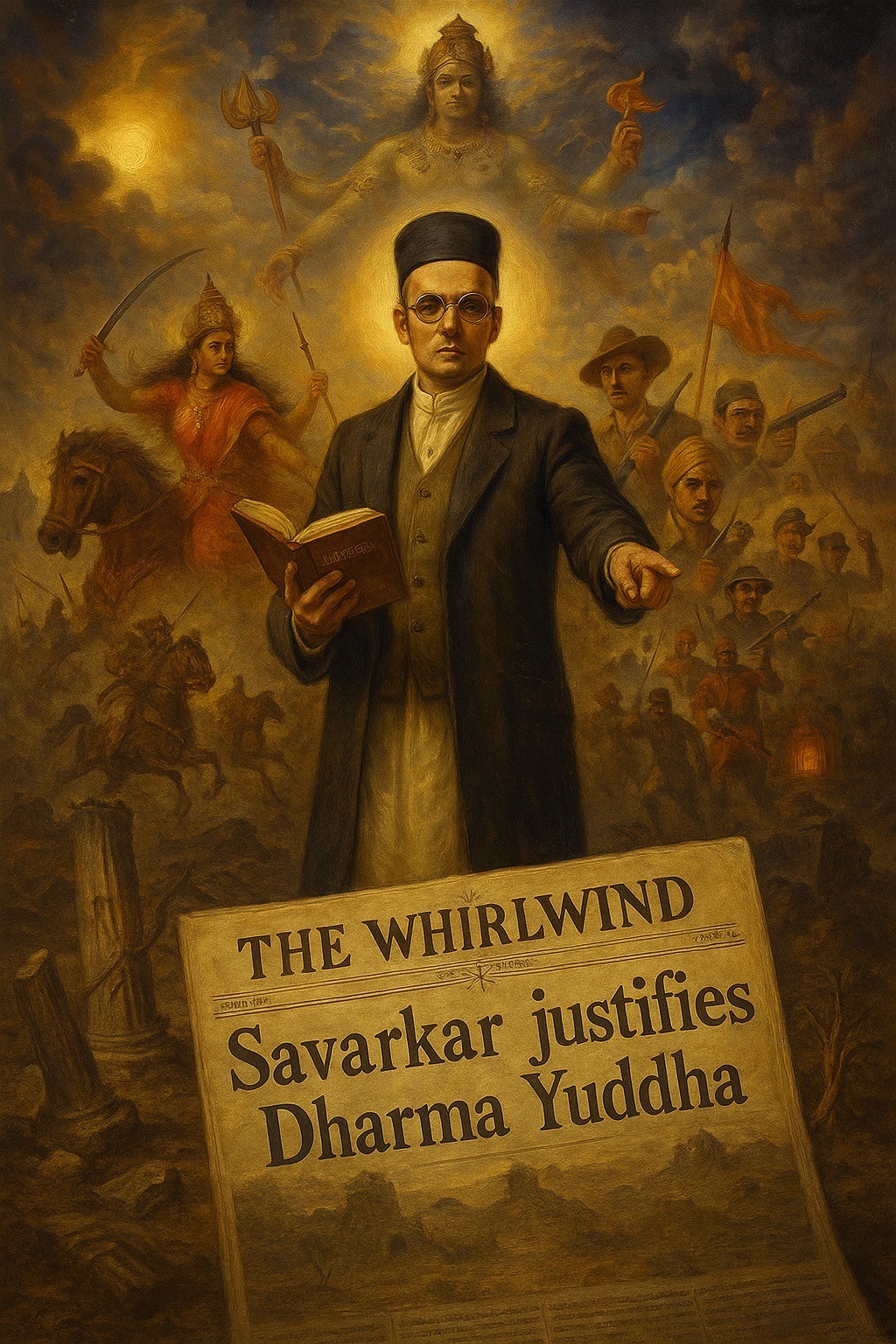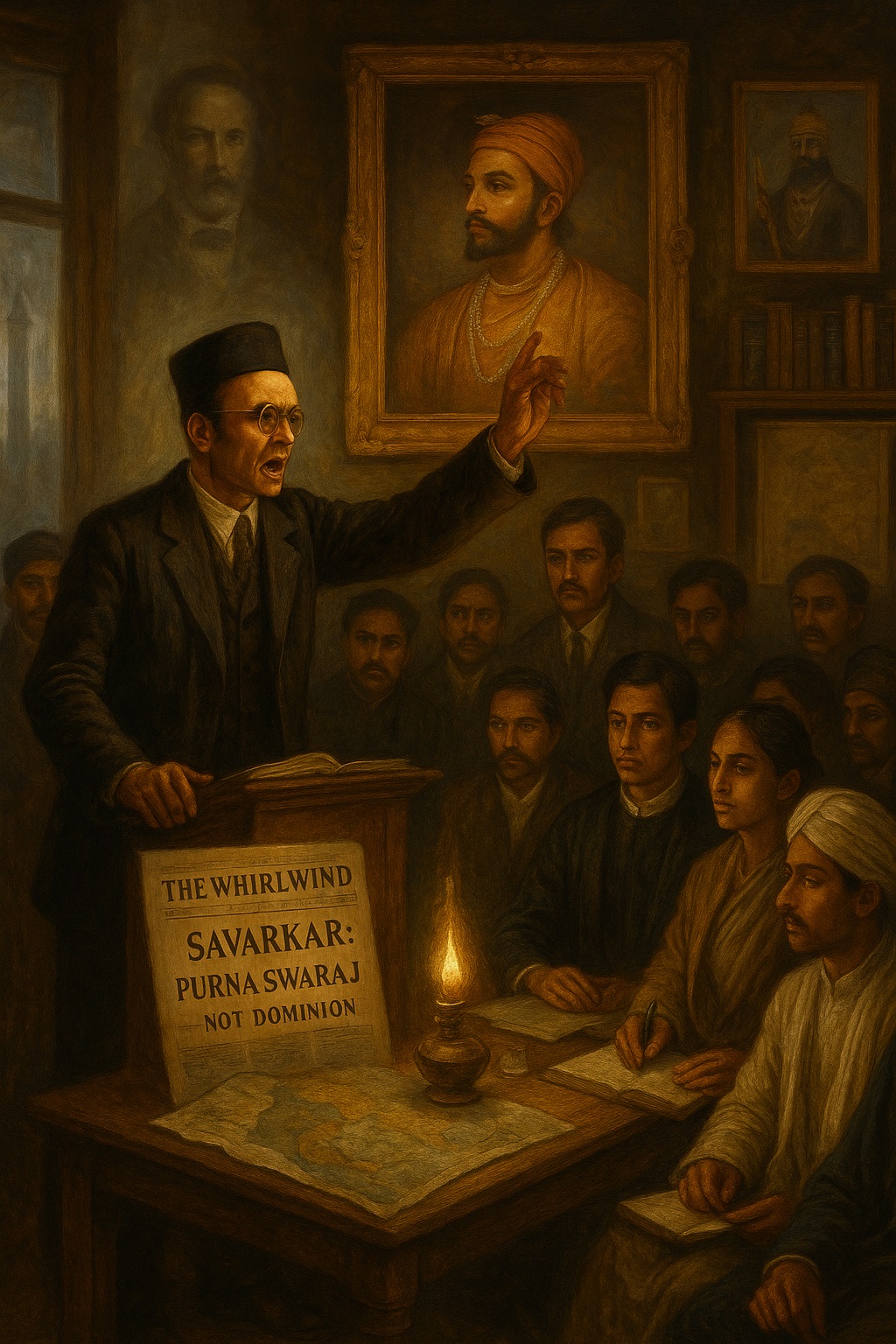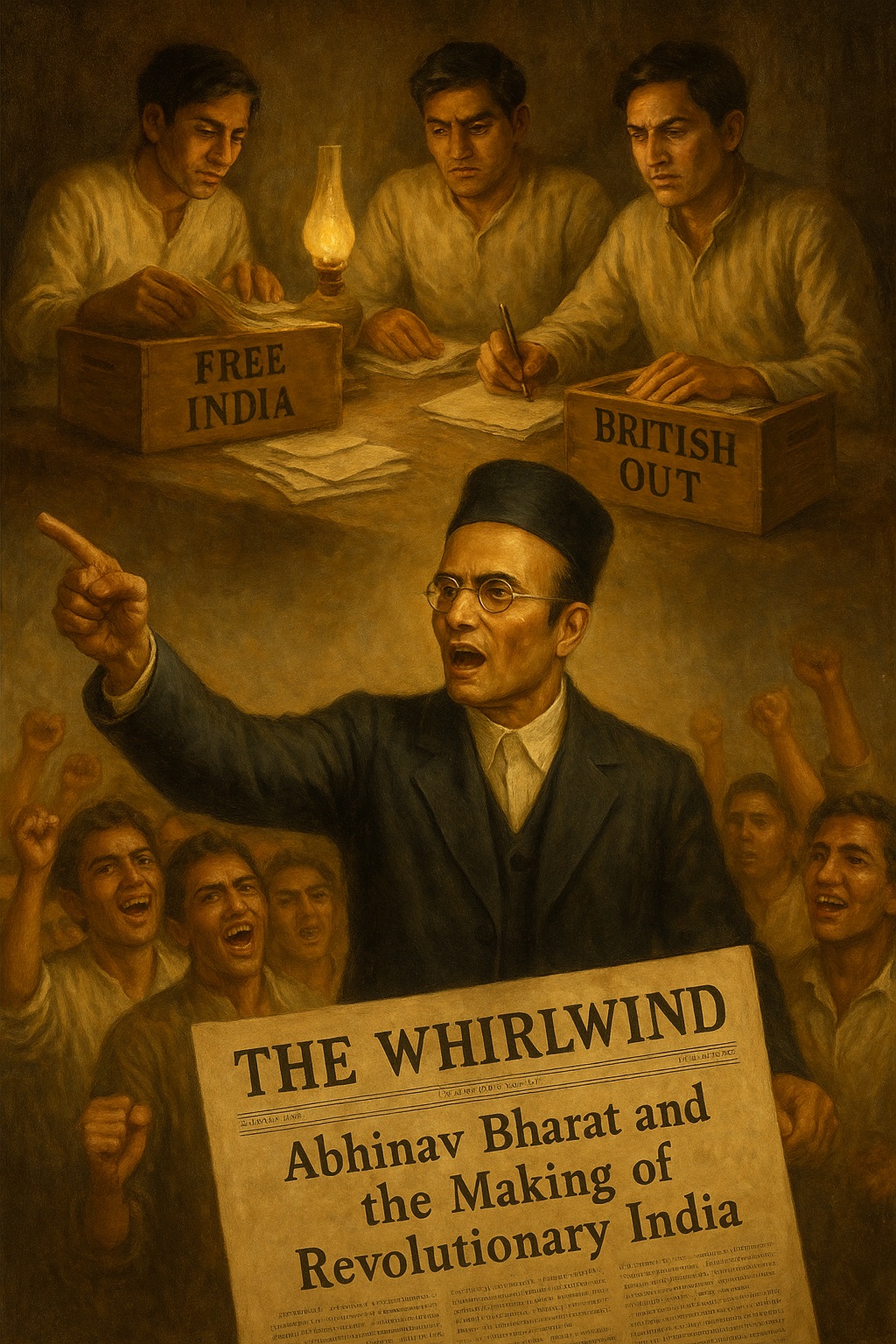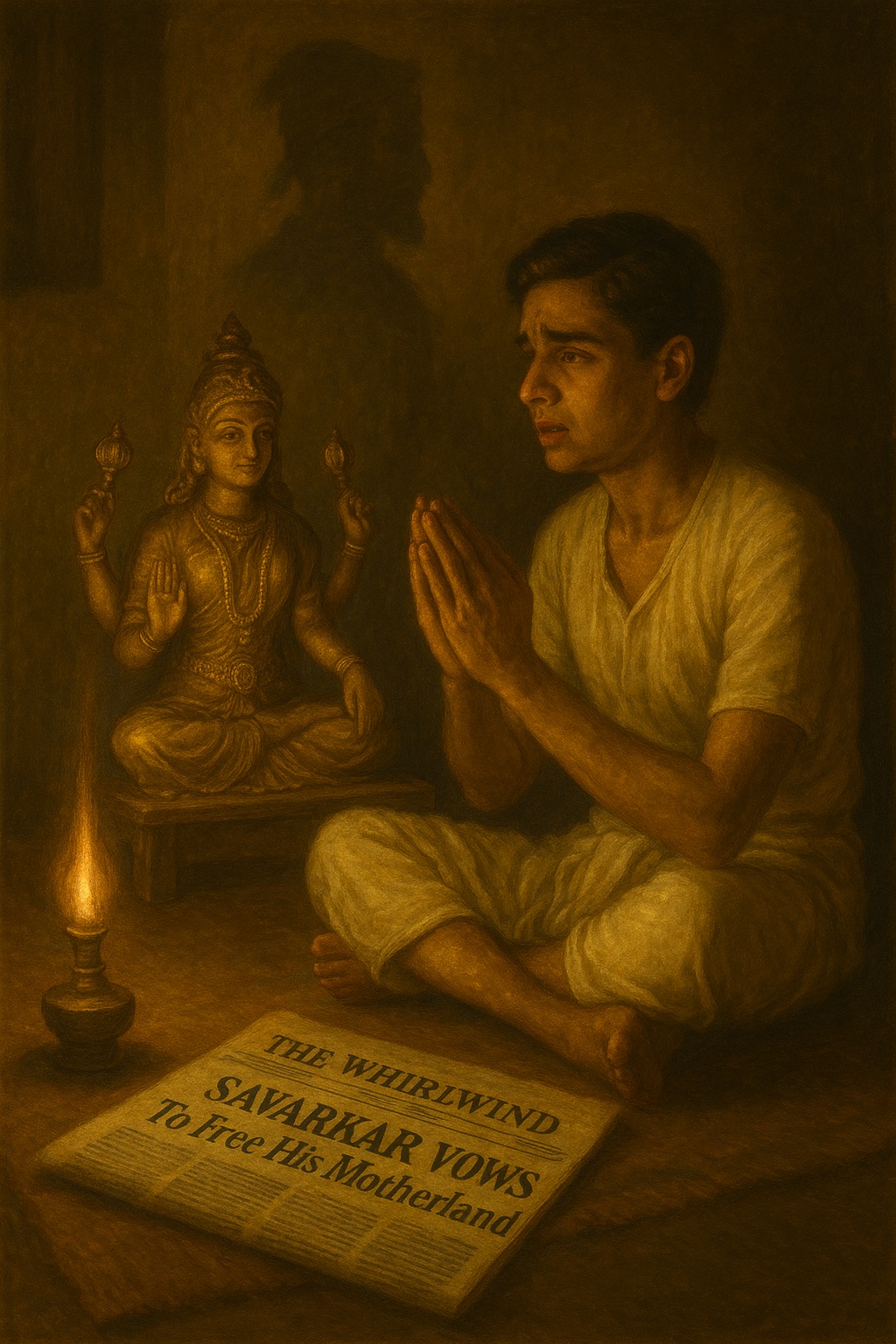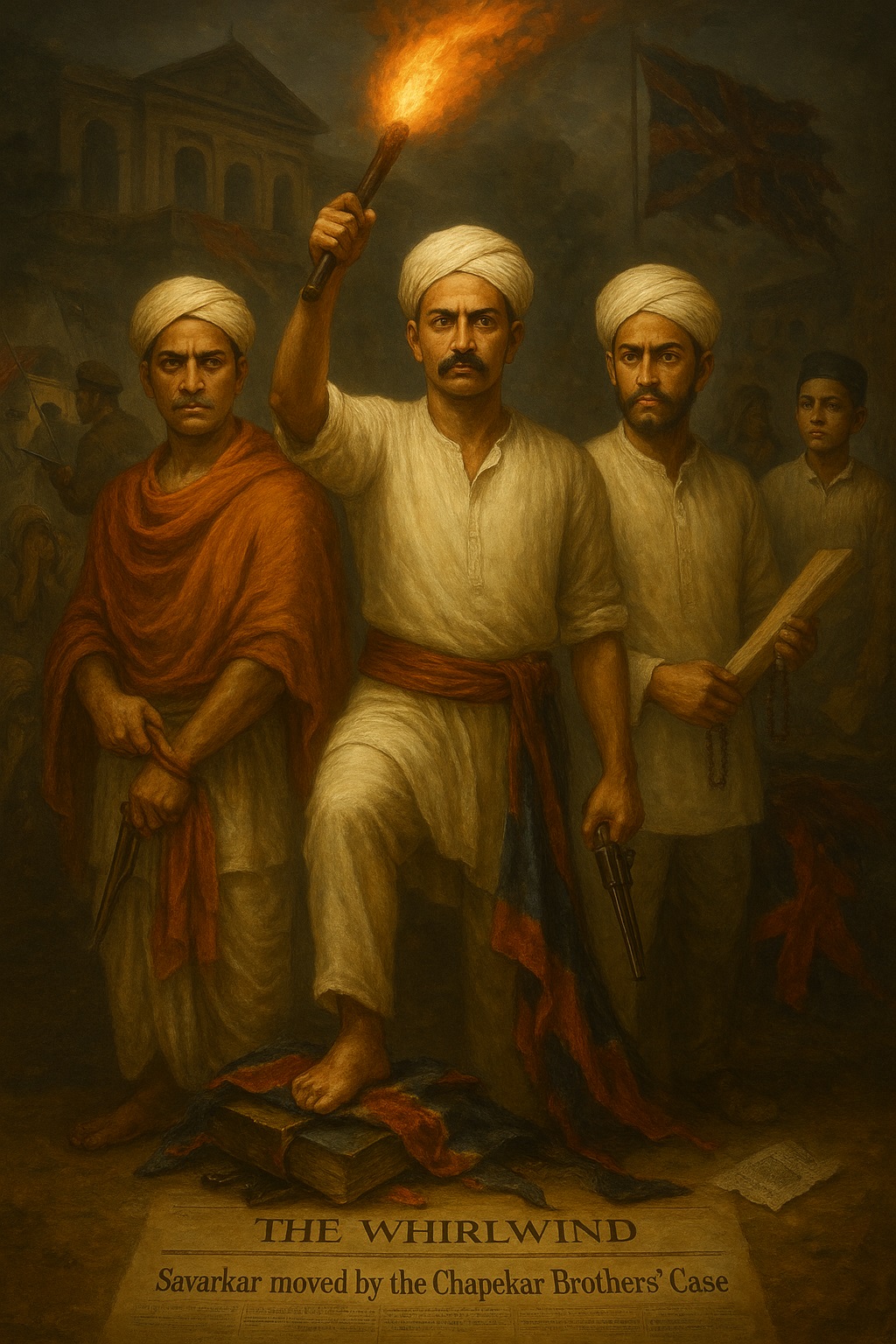Tag: Shivaji
-
Savarkar’s Coding of Hindutva; Metacode Rashtra, Part 10; Code Myth (3/20); Codeelement Shivaji and Pan-Hinduism (1/15) Myth and Nation The German cultural theorist Andreas Dörner once argued that the most powerful idea modern societies use to hold themselves together is the concept of the nation. Without it, no state can sustain a sense of unity.…
-
Political Dimension of Hindutva, Part 11 The idea of a “holy war,” known as Dharma Yuddha, against the enemies of Hindutva – particularly non-Hindu occupiers of the land – was a fundamental principle shaping Vinayak Damodar (Veer) Savarkar from his early youth. He derived this concept from the Bhagavad Gita, which speaks of the divine…
-
Savarkar’s Coding of Hindutva; Metacode Rashtra, Part 9; Code Mythos (2/20); Codeelement Hindu Pantheon When we think of Vinayak Damodar (Veer) Savarkar, we often picture the fiery nationalist, the revolutionary in exile, or the thinker behind the idea of Hindutva. But one of the most fascinating aspects of his thought is how he used myth…
-
One night, in the town of Bhagur, a boy stood before a statue of the armed Goddess Durga. This boy was Vinayak Damodar Savarkar, and the vow he took that night would ignite a revolutionary desire to stand up against British colonial rule in India. The immediate spark was the execution of the Chapekar brothers…
-
In 1897, Poona reeled under a brutal bubonic plague and even harsher British repression. To control the outbreak, British officials led by Collector Walter Rand enforced draconian measures – homes were raided, women harassed, and dignity trampled. While most of society watched in helpless silence, the Chapekar brothers – Damodar, Balakrishna, and Vasudev – chose…


